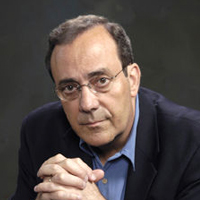Santiago Morales: the man who came back from hell

By: Carlos Alberto Montaner - 13/11/2022
Share:
Santiago warned me of the result of these elections. He knew American society extremely well. At the time of the previous elections, many Cubans were surprised when Santiago Morales asked them to vote for Joe Biden and I assured them that he was not a communist. It was enough to review Biden’s vote in favor of Radio and TV Martí’s broadcasts to Cuba. It was obvious that “Biden was not a dangerous man of the Marxist left,” as his opponents describe him. Santiago was “Democrat,” and I was “independent.” Sometimes I voted for the Republicans and other times for the Democrats. Sometimes I voted for the libertarians. It depended on the candidate. I also voted in Spain. In that case, it depended on where I was established.
I duly receive the “Sorrow Notes” sent to me by the Unión de Expresos Políticos Cubanos (Union of Cuban Former Political Prisoners.) Santiago, my dear friend, who was a political prisoner, has just passed away. He was 80 years old. They are more than 100,000 men and women. Just over one percent of the Cuban population. If it were the American population, it would reach one million two hundred thousand people sent to the dungeons. More than 60 years have passed and there are still more than a thousand prisoners of conscience. They have all been in the political prisons of the Castros. Some, a few months – as is my case, because I escaped at 17 –, and many others, up to 10, 20 or 30 years in subhuman conditions, as happened to the commanders of the Cuban revolution Huber Matos and Jaime Costa, known as “El Catalán” (The Catalonian,) Roberto Martín Pérez, the union leader Mario Chanes de Armas, former assailant of the Moncada barracks and expeditionary in the Granma yacht, or the poet Ángel Cuadra, founder of the Pen Club in Cuban exile, just to mention a few deceased. Many have perished under the firing squad or after being mistreated in the more than sixty years that this dictatorship has been going on. I am not mentioning the hundreds or thousands of dead, drowning or devoured by sharks in the Florida Straits, because it is a fairly imprecise number of people, although it is estimated that the chances of surviving on a precarious raft are 50%. For every person who makes it to Florida, one dies trying.
Santiago Morales Díaz
(“Notes of sorrow.” Clarifications in parentheses and in italics are mine)
A native of Pinar del Río, he joined the training camps in Central America at the age of 19 on July 1, 1960, being Brigadista #2531 (it started with #2500, so he was one of the first. It was called Assault Brigade 2506.) He was born on March 16, 1942. Infiltrated in Cuba to support the resistance groups in Havana, he was arrested and sentenced to 30 years in Case 41/1962 of La Cabaña. (He wasn’t executed because he was a minor and the law then prohibited it, something the government often ignored.) His number was 31,013 at the Isle of Pines prison. Then they filed Case 513/1967 in Havana against him (since he escaped from prison, he spent several months in hiding waiting for a clandestine ship that never arrived in Cuba. He was later recaptured.) Pardoned on May 25, 1979 (due to the efforts of the banker Bernardo Benes in agreement with the Jimmy Carter administration, who admitted almost three thousand Cuban political prisoners in his country,) he emigrated to the United States where he was a prosperous businessman who never forgot his commitment to the cause of Cuba’s freedom. (He founded “Maxi-Force” in Miami, a company dedicated to the manufacture and export of spare parts for branded agricultural machinery. It came to sell several million dollars annually. Manufacture was mainly done in Turkey.)
That’s the end of the “Sorrow Note” about Santiago Morales, something that he had learned in a chilling way. In 1962, when he was imprisoned, and at the end of 1966, when he managed to escape from prison, the transformation of Cuba had taken place. That restless and rebellious people, who had shaken off the Spanish yoke, the dictatorship of Gerardo Machado and that of Fulgencio Batista, had become a fearful society of frightened puppets. The reprisals of the Castro regime, and the fear of death, had achieved, as in all the countries that made up Eastern Europe, a citizenry that “sincerely” applauded its own destruction. Communism was a perfect tyranny.
“Don’t you have resentments against the US when they uselessly infiltrated you in Cuba?” I asked him one evening in his mansion in Coral Gables. He stared at me in surprise. He lit a cigar and told me, “No. It was very difficult to fight against that kind of dictatorship. I was an inexperienced kid, and I was 18 or 19 years old. At that age, a boy is not sent to his death. But no one forced me to infiltrate myself in Cuba. Of course, all those infiltrated by the CIA in the East were ruthlessly hunted down and executed. I found out about that much later. The repressive methods of dictatorships are different.”
Fortunately, after spending almost 20 years in prison, he reunited with his Cuban girlfriend, Eloísa Ferro, and lived happily married to her until she closed his eyes. He died of pancreatic cancer. I have met few people more willing to go on living. [©FIRMAS PRESS]
*@CarlosAMontaner. CAM’s latest book is Sin ir más lejos (Memories). Published by Debate, a label of Penguin-Random House, the book is available through Amazon Books.
"The opinions published here are the sole responsibility of their author."
«The opinions published herein are the sole responsibility of its author».